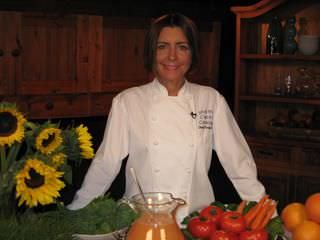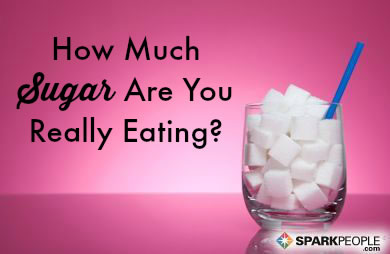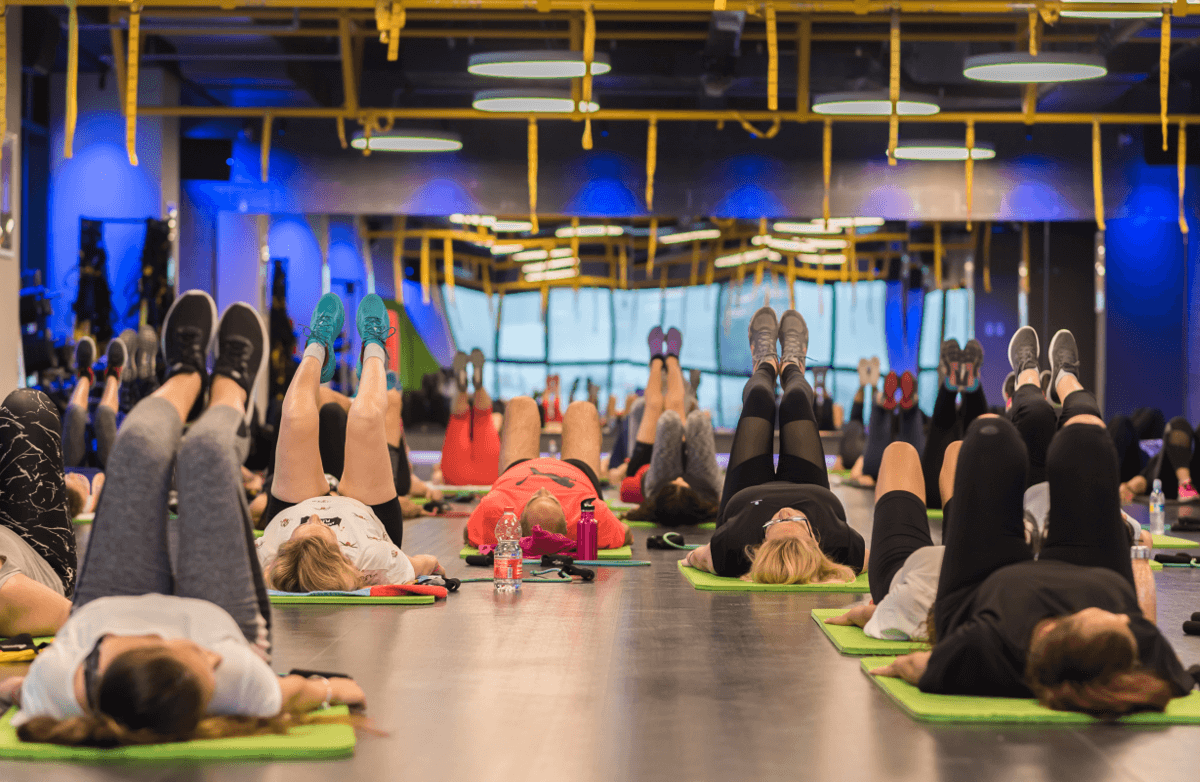|
Editor's note: We recently received an email from Cheryl Forberg, the nutritionist for NBC's hit show The Biggest Loser. She had read Coach Jen's post and wanted to share some more information about the eating habits of contestants. We invited Cheryl to write a guest blog for the dailySpark, and she happily accepted! Please welcome Cheryl to the dailySpark. By Cheryl Forberg, RD Though we try to educate as well as inspire (and entertain) each week on The Biggest Loser, as a nutritionist and a chef, I personally wish I had more time to share nutrition and cooking advice with our viewers. Though I can't explain the entire eating plan in the space of this blog, I can begin my telling you about my role with the show and share some of the insights and weight loss secrets I've learned during the last seven seasons. My first contact with the contestants is when they are selected to fly to Los Angeles for a physical exam and a final interview, just before they learn whether they'll become a cast member for the new season. During their physical exam, I conduct a comprehensive nutrition consultation with each contestant to discuss their weight history and learn about their typical eating habits and preferences. Here are some typical patterns of the contestants BEFORE the show that I have identified from my nutrition consultations:
We generate a calorie "budget" for each contestant based on body composition testing and a physical exam. Those calorie budgets range from approximately 1,100 for a smaller woman to 2,400 for a big guy. Here is a sample 1,500 calorie menu from our new book. From The Biggest Loser 30-Day Jump Start: Lose Weight, Get in Shape, and Start Living the Biggest Loser Lifestyle Today! Like a typical Biggest Loser day, this dayfeatures three meals and two snacks, plenty of fruit and vegetables, whole grains, fiber, lean protein, healthy fats and exemplifies EATING (not drinking) calories with exception of milk and a smoothie (made with yogurt and dairy that contains 25% of daily calcium intake ) Day 19 (1,530 calories) Breakfast Omelet: 1 whole egg, 2 egg whites, 1/4 cup chopped (roasted, if desired) yellow bell pepper, 2 tablespoons sautéed red onion, 1/2 teaspoon chopped thyme, and 1 teaspoon olive oil 1 cup fresh blueberries with 1 teaspoon ground flaxseed and 1/4 teaspoon ground cinnamon 1 Thomas’ Light Whole Grain English Muffin, toasted 8 ounces green tea, ice water, or fat-free milk Snack 2 servings (1 recipe) Frosty Pumpkin Smoothie Lunch 5 ounces halibut, poached, topped with 1/2 cup halved cherry tomatoes, 1 tablespoon chopped black olives, and 1 teaspoon minced basil 2 cups mixed arugula-and-spinach salad with 3 olives, sliced; 1 tablespoon sunflower seeds (or ground flaxseed); and 1 tablespoon fat-free or low-fat vinaigrette 8 ounces fat-free milk 8 ounces green tea or ice water Snack 2-inch wedge honeydew 2 ounces thinly sliced turkey breast 4 almonds Dinner 5 ounces skinless roast chicken breast 1/2 cup roasted sweet potato 1 cup steamed green beans 8 ounces ice water or chamomile tea Vanilla Poached Pear (Find the recipes here.) The contestants receive their calorie budgets, and I introduce them to the Biggest Loser eating plan and explain the importance of food journals. Keeping a food journal is KEY to a successful weight loss plan. It helps you identify times that you eat certain things, allowing you to learn from your eating patterns. It is imperative to keep track of the number of calories you take in (and burn off through exercise) each day, especially when you're just getting started. For people who are on the computer regularly, an online tracker can be very helpful. But since no one is front of the computer continuously, it's a good idea to carry around a small tablet to record every bite and sip you take. It's easy to forget the small "tastes" we have throughout the day, and the calories can add up quickly.  The contestants complete food journals every single day. I analyze every one of them every day and share my results with the trainers and the Biggest Loser medical expert team. We look to see that they are meeting their calorie goals each day. We also look at the balance of those calories to ensure they're getting the right amounts of complex carbohydrates (whole grains, fruits and vegetables), lean proteins (chicken, turkey, beans and legumes, lean dairy), healthy fats (nuts, seeds, olive oil, avocado) as well as micronutrients such as calcium. The kitchen at the Ranch is well stocked with all of these foodsI wouldn't call them uncommon foods, but I would say that many of these foods were unfamiliar to many of the contestants prior to arriving at the Ranch. Many of them ate very few fruits and vegetables and whole grains. At the Ranch, they eat only whole grains, and lots of fruits and vegetables – four cups per day is the goal (4 cups total -- combined fruits and vegetables.) We teach contestants to like eating fruits and vegetables by sharing recipes, cooking tips and ideas about fruits and vegetables they may not have tried. I took some of the contestants on a grocery store tour a few weeks ago, and most of them had never tasted jicama -- they loved it. Grilled vegetables easily add layers of rich flavor without adding much fat. They can be served with any meal, and leftovers can be added to an omelet or salad the next day. Fresh fruit can be an expensive addition to the budget these days, but frozen fruit is a wonderful and often more affordable option for many. Frozen fruit can be tossed in a smoothie, and frozen berries can be thawed and stirred into oatmeal. The longer each contestant is able to stay on the Ranch, the more time they will have to learn about a whole new way of shopping, eating, cooking--living. Many of the contestants tell me they've tried so many "diets" before. The reason they feel this plan is so successful for them is because there is so much education provided in terms of what they're eating and why. Understanding that makes it easier to stick with the plan. The BL plan includes such a wide variety of ingredients as well as tips on how to prepare these foods – there's something here for everyone, and it's not easy to get bored with the large variety of choices. The most important point is that this combination of high-nutrient, high fiber foods provides the highest quality calories. These foods support a strong immune system, promote healthy blood sugar levels as well as cardiovascular health. Though it is true that there's no "white stuff" at the Ranch (no white flour, white sugar, white rice, or white pasta), the Biggest Loser eating plan does have a small budget of "extra calories" each day for an occasional splurge of a favorite treat. Those treats include pudding made with fat-free milk, frozen yogurt, and popsicles. It wouldn't work if we told the contestants they can never eat their favorite foods again. We do however hope that some of their favorite foods will change! While at the Ranch, contestants have access to a great kitchen. They learn from each other and from guest chefs how to prepare anything from an egg white omelet to stir fries and salads. The kitchen is well-stocked, and they do prepare their own meals for the most part, so this is another part of the learning curve for them. As a chef as well as their nutritionist, I also share insights with the contestants in terms of how to add layers of flavor to their favorite dishes while minimizing the addition of added fats. I also speak with the contestants regularly after they are eliminated to help keep them on track as they adjust to the "real world" at home. I know the show is inspiring a lot of people – it's airing in ninety countries. I hope we can increase the nutrition education we provide. I try to supplement that with my weekly blog. Do you watch The Biggest Loser? Share your thoughts about the eating plan and Cheryl's blog. Photos and recipes courtesy of Cheryl Forberg, all rights reserved. |
More From SparkPeople
|

.png)










.jpeg)
.jpg)
